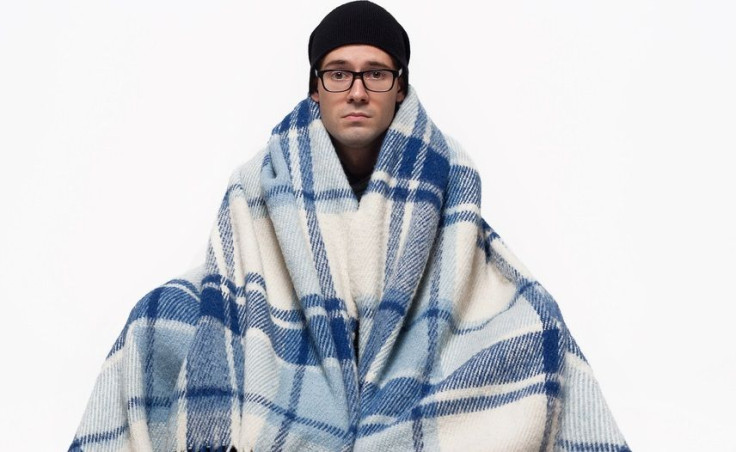Cold Temperatures Help Brown Fat (The Good Fat) Grow; Stimulates Metabolic Balance, Lower Blood Sugar Levels

The next time you feel guilty about having indulged in an extra-rich dinner, just spend the night with your air conditioner turned up, because, according to new research, cool environments promote the growth of brown fat, which burns white fat, thus increasing insulin sensitivity and bringing sugar levels down.
The research was presented at ICE/ENDO 2014, the joint meeting of the International Society of Endocrinology and the Endocrine Society in Chicago. A paper on the study, which showed that cool environments stimulate brown fat growth, while warm temperatures reduce brown fat in the body, was also published recently in the journal Diabetes.
Brown adipose tissue (BAT), or brown fat, is found in mammals. Its primary role is to burn large amounts of chemical energy to produce heat. Because of this, its thermogenic properties keep small animals and newborn babies warm in cold weather. Previous studies have also shown that brown fat plays a key role in regulating body weight when someone overeats, and mammals with larger amounts of it see its benefits in its ability to stave off obesity and diabetes. But until now, its exact role in human metabolism has not been established.
Endocrinologist Dr. Paul Lee, from Sydney's Garvan Institute of Medical Research, recently conducted the ICEMAN study — short for The Impact of Chronic Cold Exposure in Humans — at the National Institutes of Health (NIH) in Washington. His goal was to show the "plasticity," or recovery, of brown fat in humans when responding to cooler temperatures, according to a press release.
Lee’s previous studies showed a correlation between an abundance of brown fat and a lean body frame, and low blood sugar levels. In lab experiments, he was also able to show that ordinary white fat cells can change into brown fat cells in humans.
The ICEMAN study exposed five healthy men to temperatures akin to a climate-controlled building — the NIH Clinical Center — for a period of four months. During this time, they lived their normal lives during the day, and returned each night to the Center. They were required to stay at the Center for at least 10 hours each day in these temperature-regulated rooms.
The temperatures varied each month. For the first month, the NIH rooms were maintained at 24 degrees Celsius, or about 75 degrees Fahrenheit. This temperature was considered a "thermo-neutral" temperature, at which the body does not have to work to produce or lose heat. For their second month, the temperature was lowered to 19 degrees Celsius (about 66 degrees Fahrenheit), then it went back up for the third month to 24 degress Celsisus. For their fourth month in the Center, the temperatures were raised to 27 degrees Celsisus, or about 80 degrees Fahrenheit.
At the end of each month, participants underwent a detailed "thermal metabolic evaluation," in a whole room calorimeter, which measures energy expenditure through air samples. Measurements taken at the end of the first month represented the "baseline" energy expenditure. Additionally, cold-stimulated PET/CT scans were used to measure brown fat, while muscle and fat biopsies revealed tissue metabolic changes.
They found that brown fat increased during the months with lower room temperatures, while they decreased during times of higher temperatures, regardless of the weather outside. During the cold month, brown fat increased by 30 to 40 percent, while it returned to the baseline when the temperatures were set at 24 degrees Celsius. During the hottest month, the brown fat value dipped below the baseline. These studies showed that the amount of brown fat in humans can be manipulated.
They also found that tissue was more prone to using glucose when exposed to the cold. That's an important observation, as it means that insulin sensitivity was increased, suggesting that people with more brown fat need less insulin to bring their blood sugar levels down. Brown fat may benefit diabetics, whose bodies have to work hard to bring sugar levels down after a meal, Lee said.
"The improvement in insulin sensitivity accompanying brown fat gain may open new avenues in the treatment of impaired glucose metabolism in the future. On the other hand, the reduction in mild cold exposure from widespread central heating in contemporary society may impair brown fat function and may be a hidden contributor to obesity and metabolic disorders," Lee said in the release. "Studies have been performed in the UK and U.S. measuring bedroom, dining room and lounge room temperatures in people's homes over the last few decades, and the temperature has climbed from about 19 to 22, a range sufficient to quieten down brown fat."
He said that with a lack of physical activity and a poor diet, "it is tempting to speculate that the subtle shift in temperature exposure could be a contributing factor to the rise in obesity," as well.
Source: Lee P, Smith S, Linderman J, et.al. Impact of Chronic Cold Exposure in Humans (ICEMAN) Study: Evidence for Brown Adipose Tissue Plasticity Modulating Glucose Metabolism in Humans. Diabetes. 2014.
Published by Medicaldaily.com



























